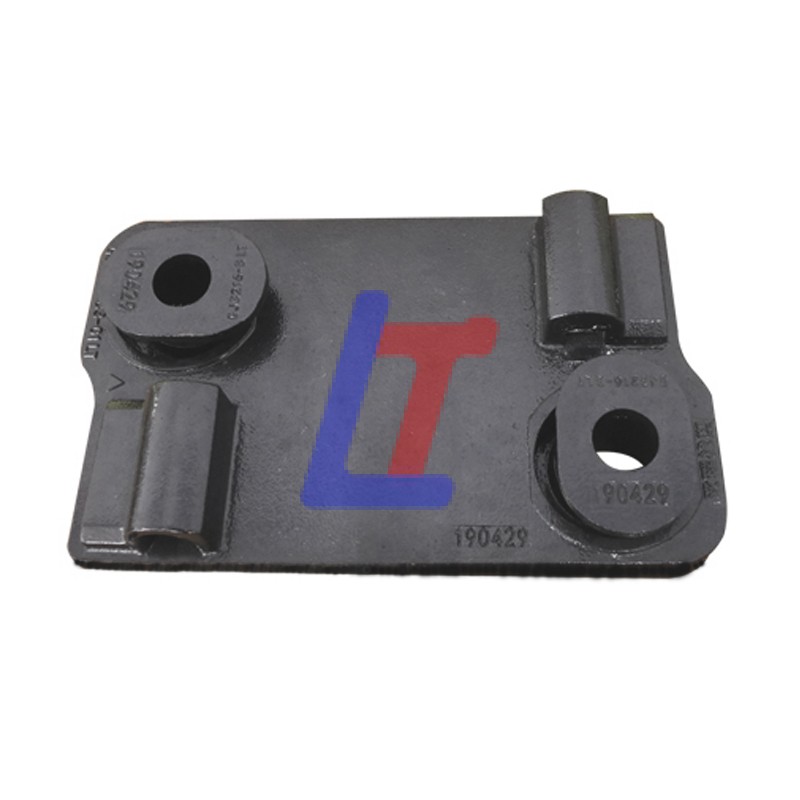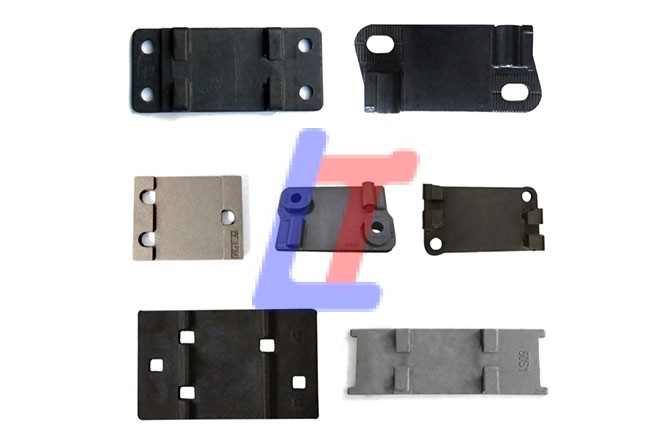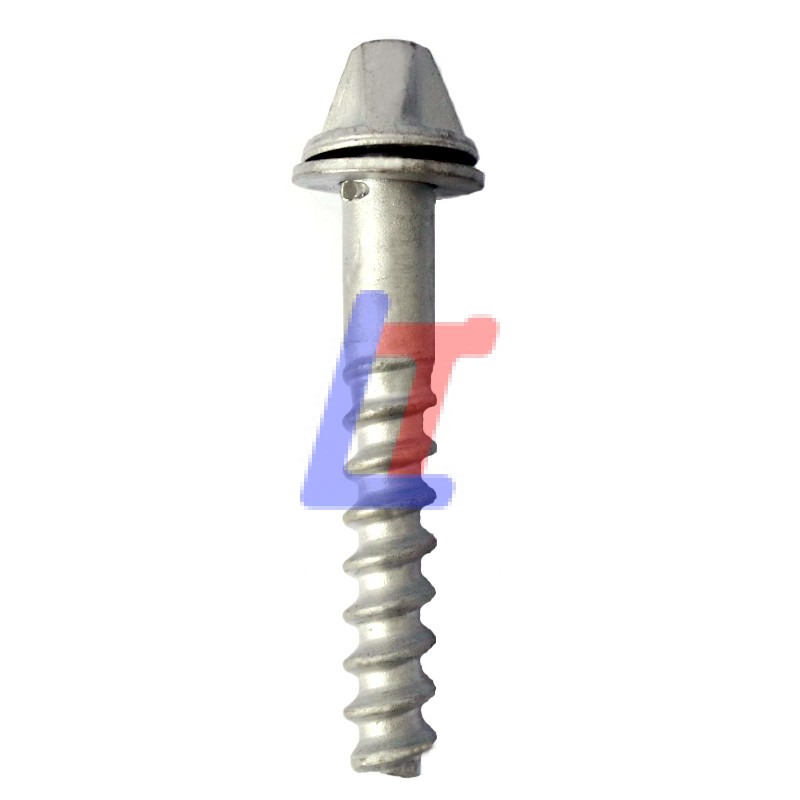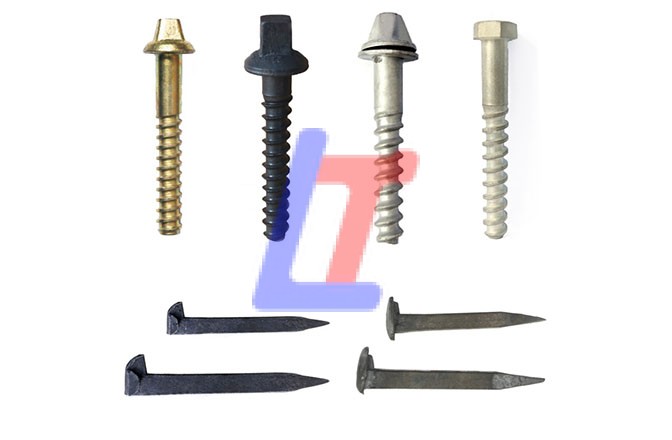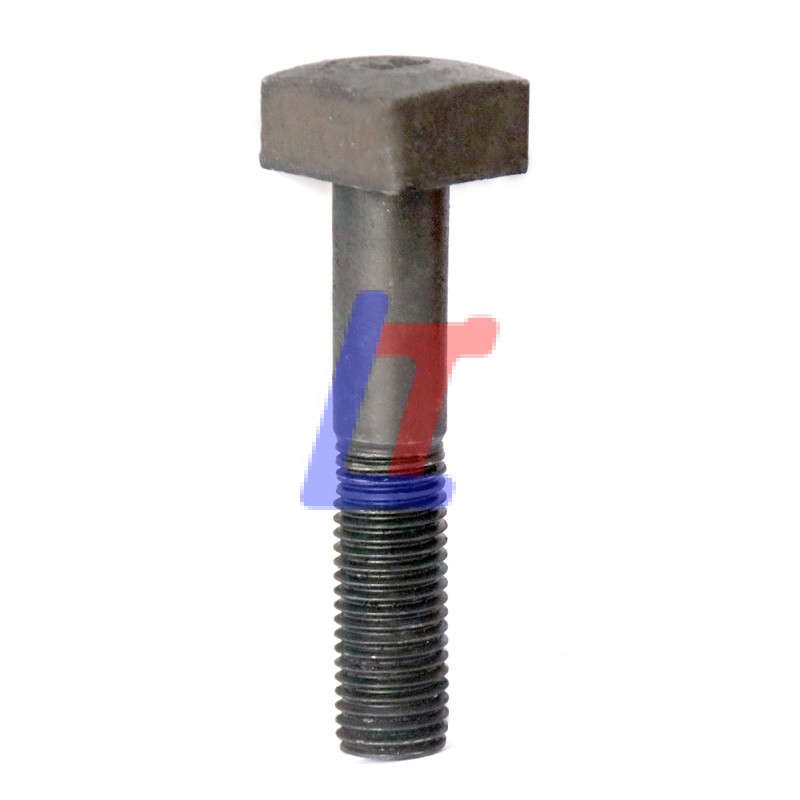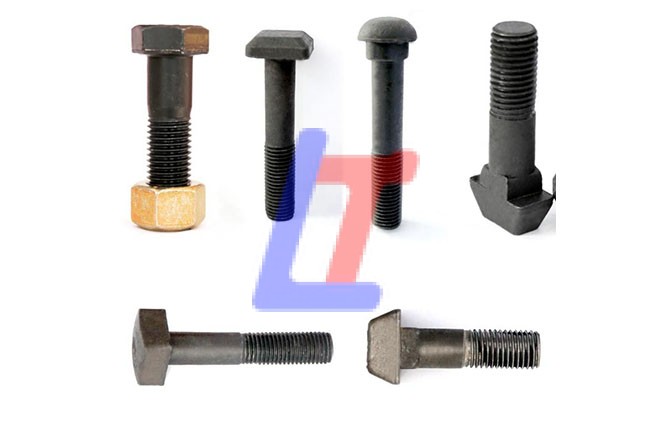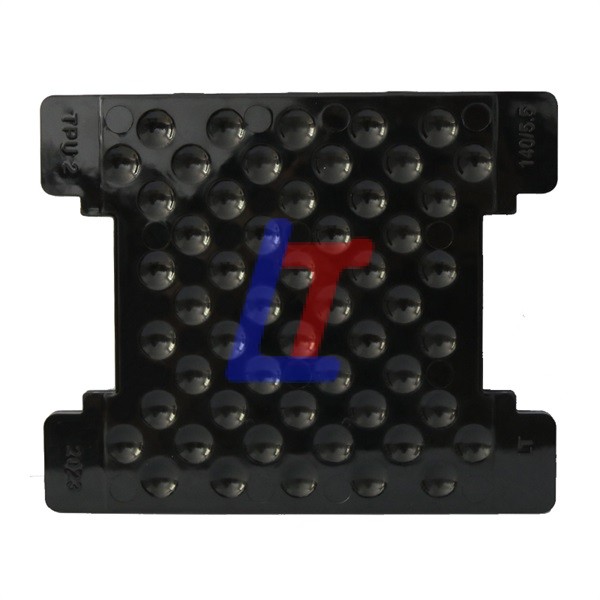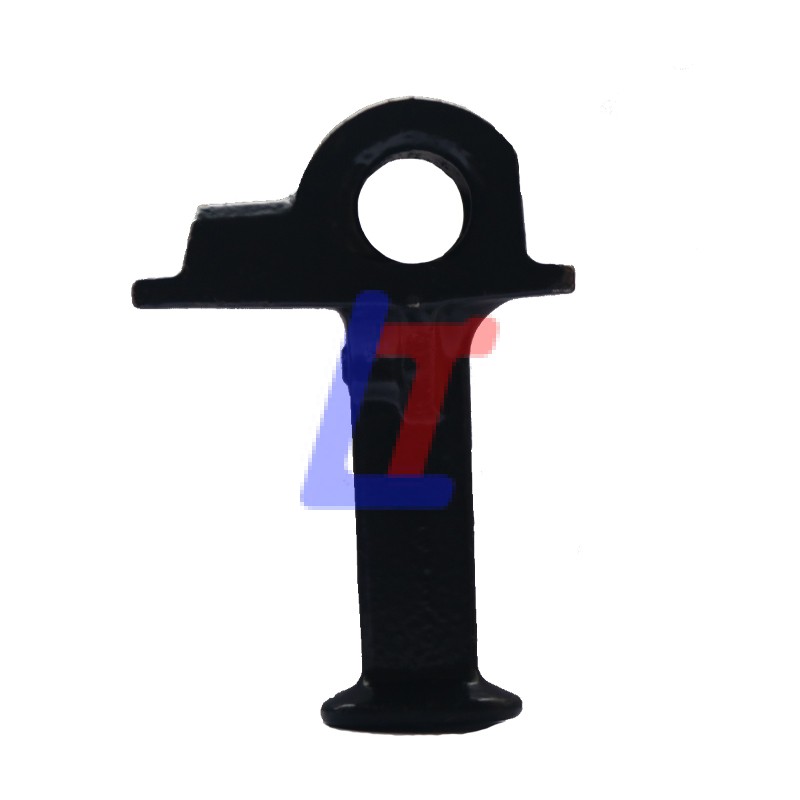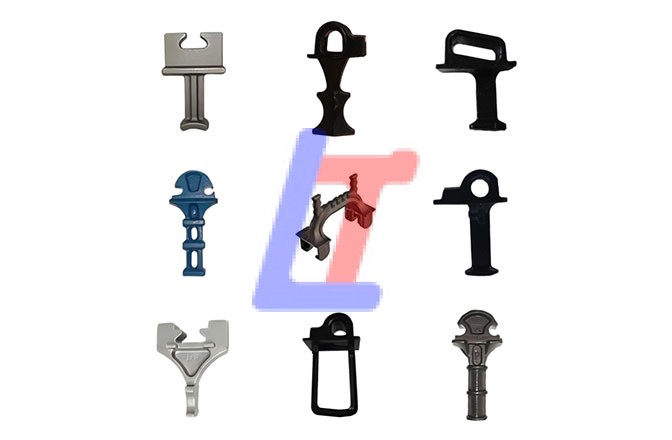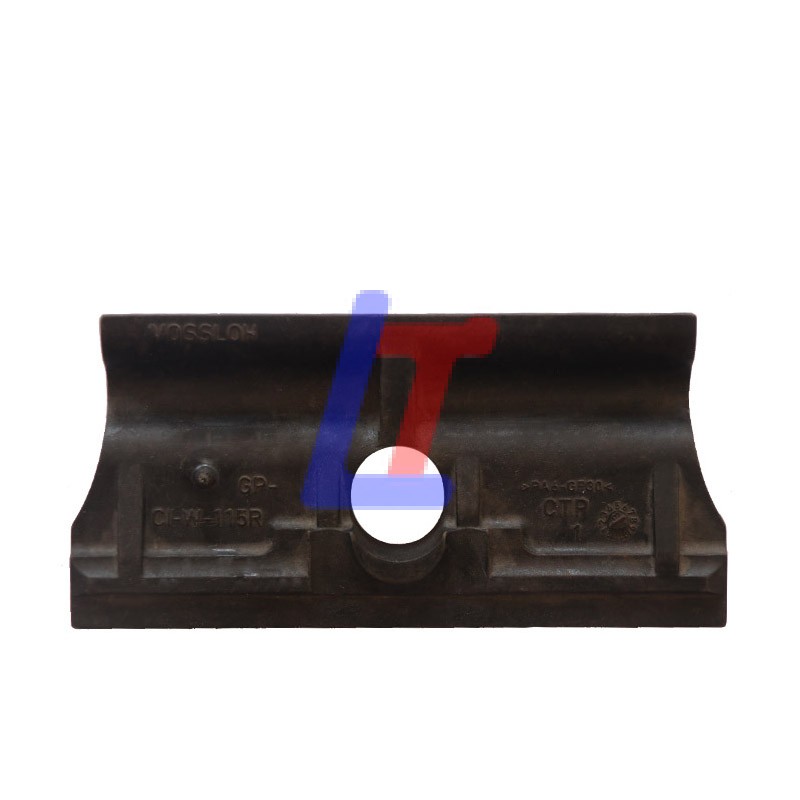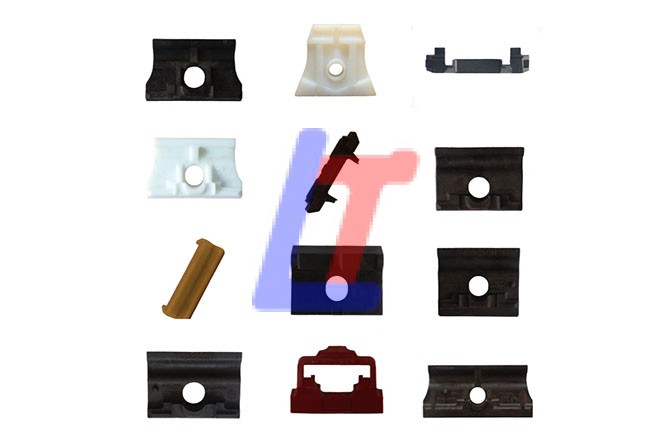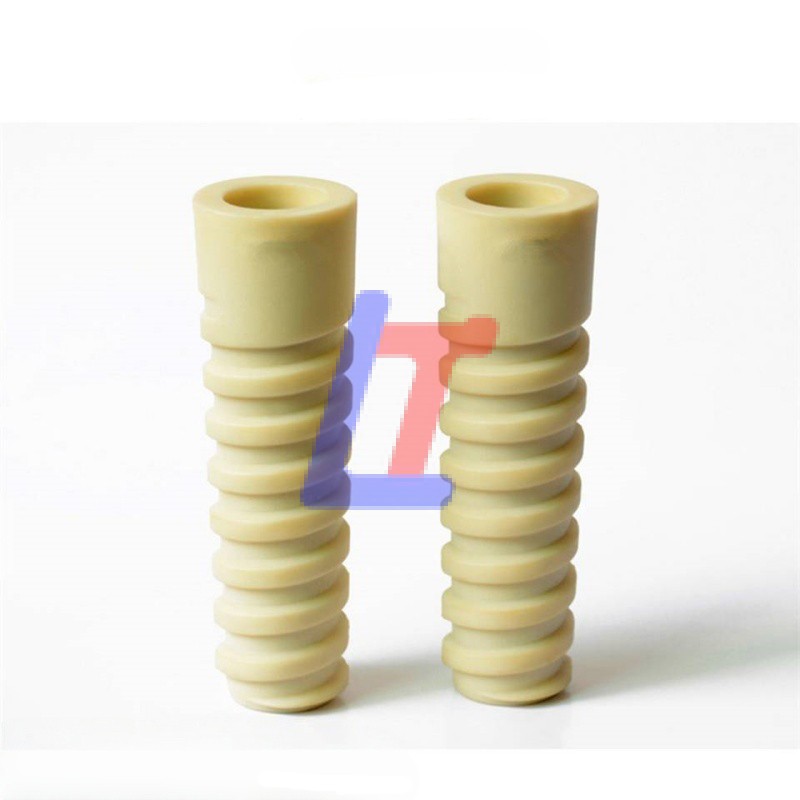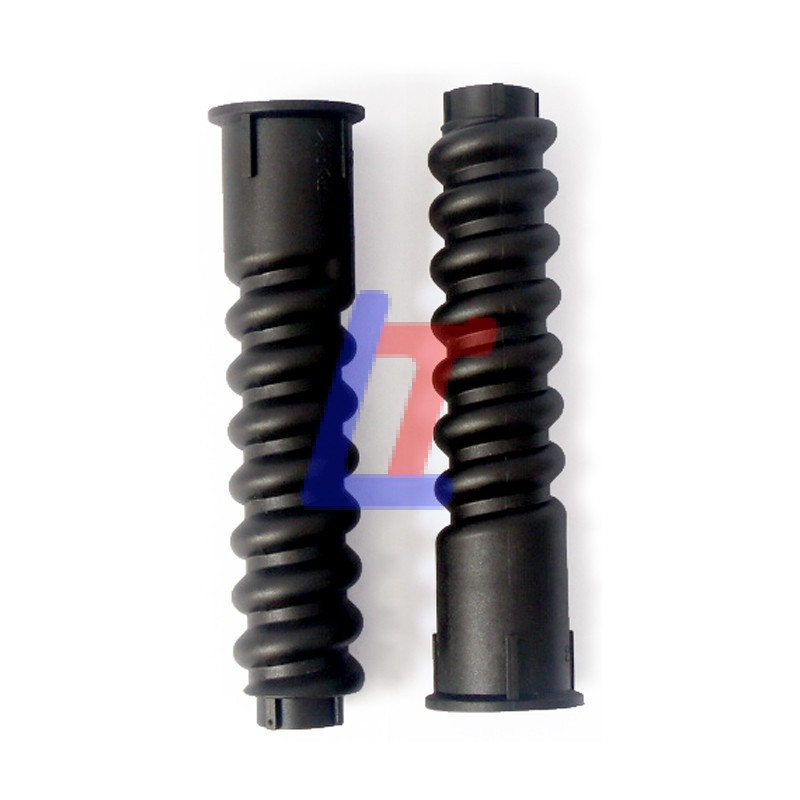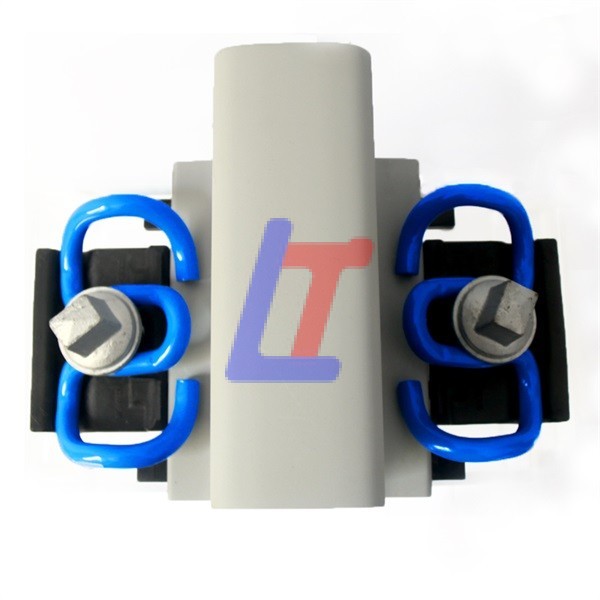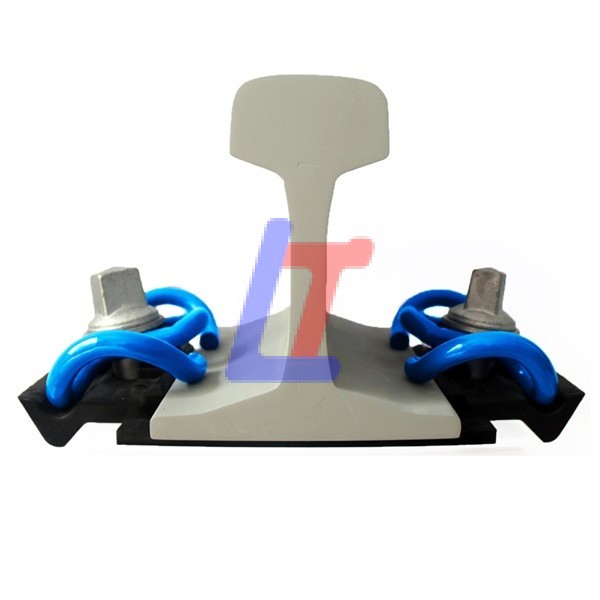Railway screw spike, also known as rail screw spikes or lag screw spikes, are specialized fasteners used to secure rails to wooden or composite sleepers (ties) in railway tracks. They provide a more durable and reliable alternative to traditional cut spikes, especially in heavy-load or high-speed rail lines. Screw spikes are commonly used to fasten timber railway sleepers; however, they can also be used in conjunction with plastic ferrules that have been cast into concrete sleepers.
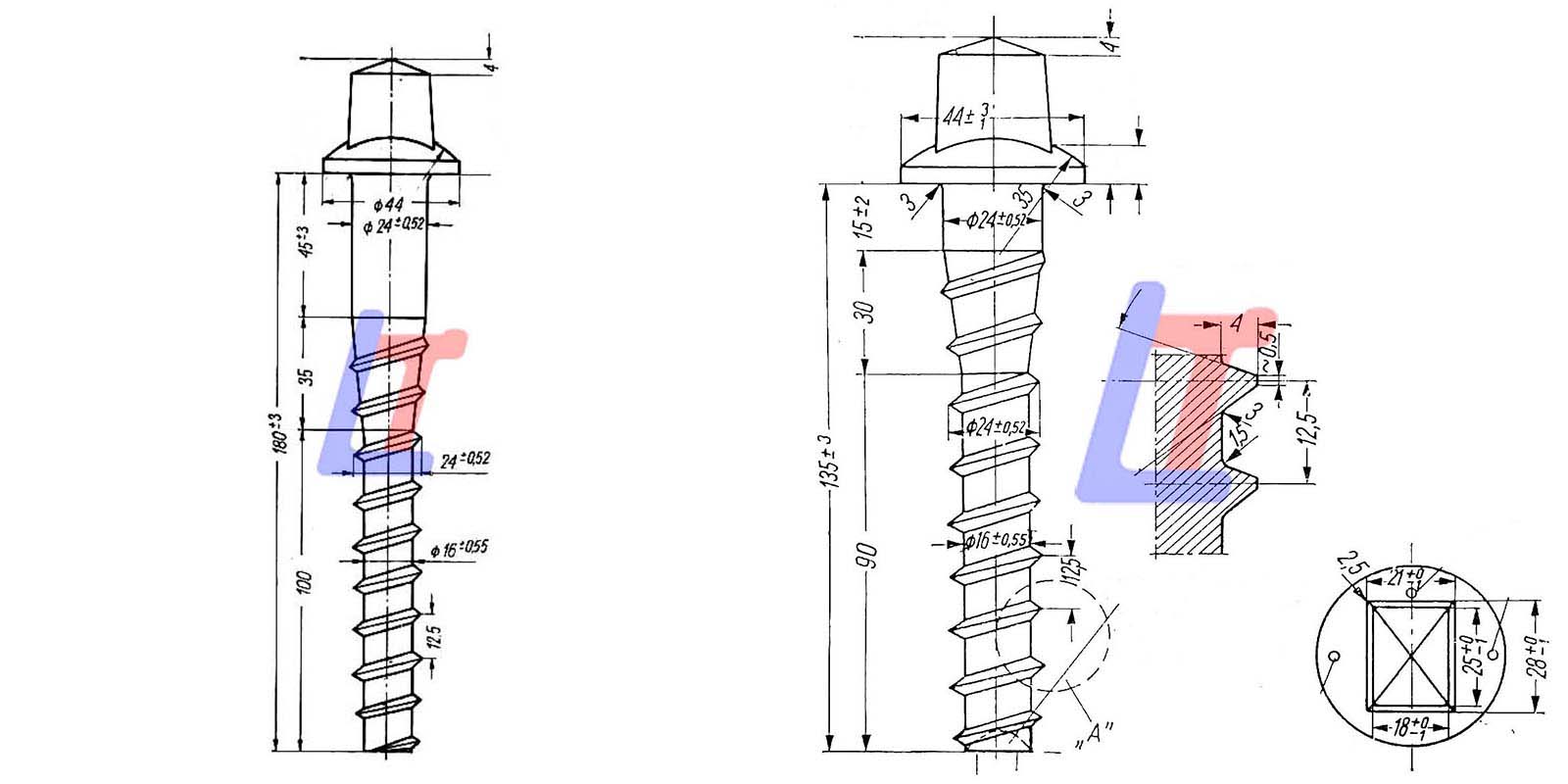
Classification of the Screw Spike
1. Double-Head Screw Spike
The double-head screw spike (also known as a twin-head screw spike or double-ended screw spike) is a specialized railway fastener designed for securing rails to sleepers while allowing for easy adjustment and replacement. Unlike standard screw spikes, it has two threaded heads, offering enhanced functionality in track maintenance and alignment corrections.
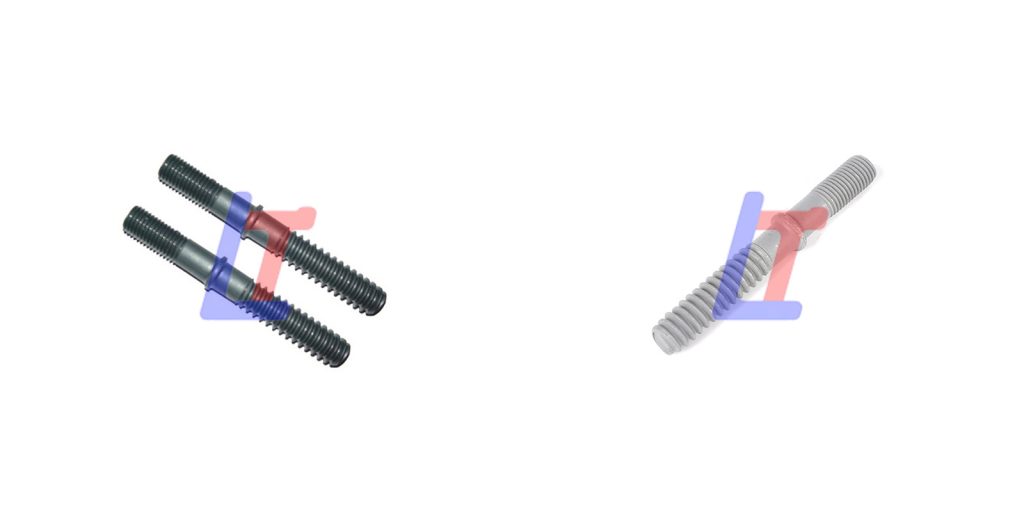
Key Features:
1. Dual-Ended Threading
- Both ends are threaded, allowing reversible installation (either end can be driven into the sleeper).
- If one end wears out or gets damaged, the spike can be unscrewed, flipped, and reused.
2. Hexagonal or Square Drive Head
- Facilitates mechanical tightening using a wrench or impact tool.
3. High-Strength Steel Construction
- Typically made from carbon steel or alloy steel with anti-corrosion coatings.
4. Compatibility with Elastic Fastening Systems
- Often used with rail clips, shoulder plates, and baseplates to provide a secure and flexible rail-fastening solution.
Advantages:
- Extended Service Life – Can be flipped and reused if one end is damaged.
- Reduces Maintenance Costs – Eliminates the need for complete replacement in some cases.
- Better Adjustability – Allows for easier realignment of rails during track maintenance.
- Higher Resistance to Vibration Loosening – Threaded design ensures a firm grip.
Common Applications:
- Wooden & Composite Sleepers – Used in traditional and modern track systems.
- Heavy-Haul & High-Speed Rail Lines – Provides extra stability under dynamic loads.
- Curves & Switches – Helps resist lateral forces that can displace rails.
- Temporary & Permanent Tracks – Useful in construction zones where adjustments are frequent.
Installation Method:
- Pre-Drilling – A pilot hole is often drilled to prevent wood splitting.
- Mechanical Driving – Installed using a hydraulic torque wrench or impact driver for consistent tightness.
- Torque Control – Proper tightening ensures optimal clamping force without damaging the sleeper.
Conclusion:
The double-head screw spike is a cost-effective and durable solution for railway tracks, especially in high-stress environments where frequent adjustments are needed. Its reversible design makes it a preferred choice for modern rail systems aiming for long-term reliability and reduced maintenance costs.
2. Hexagon Screw Spike
The hexagon screw spike (or hex-head screw spike) is a heavy-duty railway fastener designed for securely attaching rails to wooden or composite sleepers. Its hexagonal head allows for high-torque installation, making it a robust alternative to traditional square-head or cut spikes, especially in high-load and high-speed rail applications.
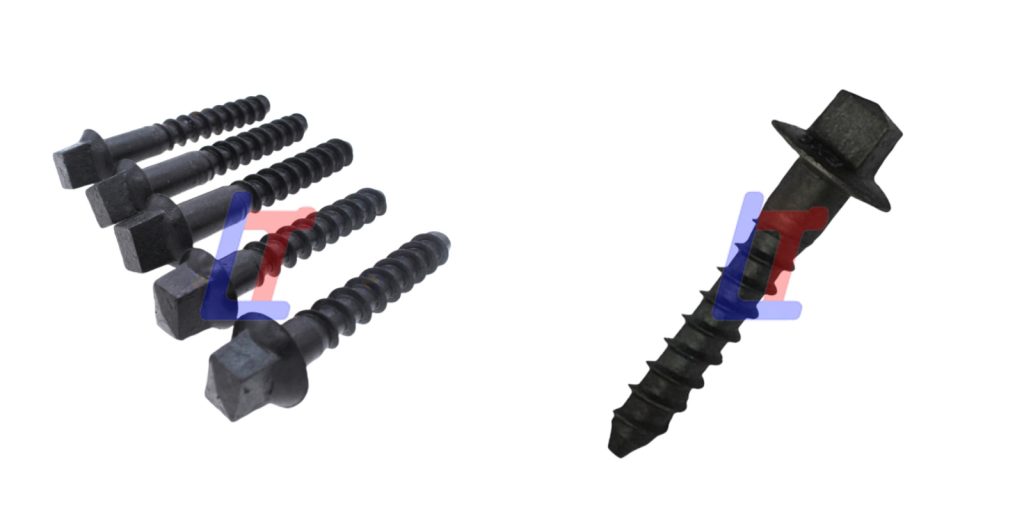
Key Features:
1. Hexagonal Head
- Allows for high-torque tightening using standard wrenches or impact tools.
- Prevents slippage during installation compared to square heads.
2. Fully Threaded Shank
- Enhances grip in wooden or composite sleepers, reducing the risk of loosening under vibration.
3. High-Strength Steel Construction
- Made from carbon steel, alloy steel, or boron steel for durability.
- Often coated with zinc, epoxy, or other anti-corrosion treatments.
4. Compatible with Rail Fastening Systems
- Works with elastic rail clips, baseplates, and shoulder plates for a secure hold.
Advantages:
- Higher Torque Resistance – Hex head prevents tool slippage during installation.
- Stronger Grip in Sleepers – Full threading ensures better holding power.
- Easier Maintenance – Can be unscrewed and replaced without damaging the sleeper.
- Longer Service Life – Resists loosening under heavy train loads.
Common Applications:
- Wooden & Composite Sleepers – Used in traditional and modern track systems.
- Heavy-Haul & High-Speed Rail Lines – Provides stability under extreme loads.
- Curves & Switches – Resists lateral forces that can shift rails.
- Urban Rail & Tram Tracks – Ensures secure fastening in high-vibration areas.
Installation Method:
- Pre-Drilling – A pilot hole is recommended to prevent wood splitting.
- Mechanical Driving – Installed using a hydraulic torque wrench, impact driver, or manual wrench.
- Torque Control – Proper tightening (typically 200-400 Nm) ensures optimal clamping force.
Conclusion:
The hexagon screw spike is a superior choice for railway tracks requiring high clamping force, durability, and resistance to vibration loosening. Its hex-head design allows for easier installation and maintenance, making it ideal for modern rail systems.
3.Square Head Screw Spike
The square head screw spike is a traditional yet highly effective railway fastener used to secure rails to wooden or composite sleepers. Its square-shaped head allows for easy installation and removal using standard tools, making it a reliable choice for various rail track applications.
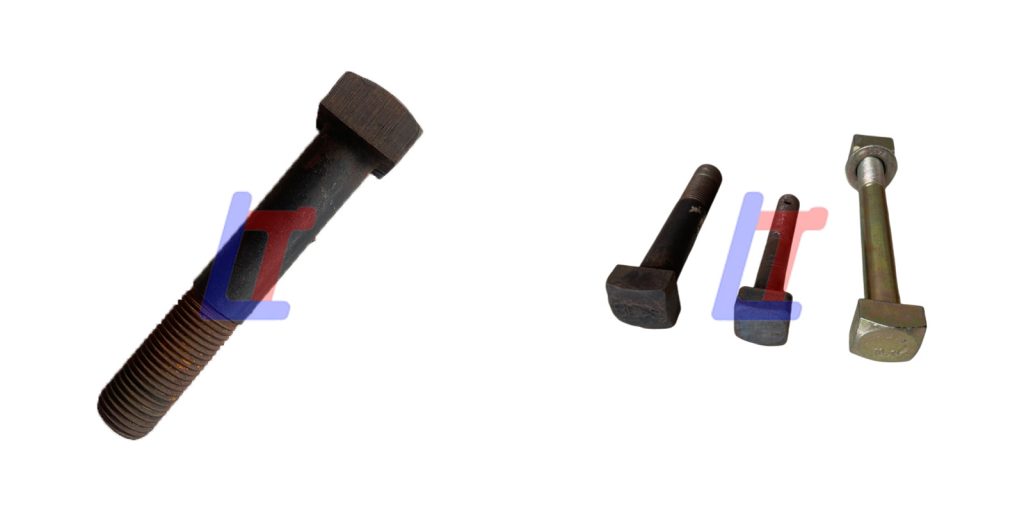
Key Features:
1.Square Head Design
- Compatible with square wrenches, claw bars, or impact tools for installation and removal.
- Provides a secure grip during tightening, reducing slippage risk.
2.Fully Threaded Shank
- Enhances pull-out resistance in wooden sleepers compared to cut spikes.
- Reduces loosening under dynamic loads.
3.High-Strength Material
- Typically made from carbon steel, alloy steel, or boron steel for durability.
- Often coated with zinc, epoxy, or other anti-corrosion treatments for longer service life.
4.Compatibility with Rail Fastening Systems
- Works with elastic rail clips, baseplates, and tie plates for a secure hold.
Advantages:
- Easy Installation & Removal – Square head allows for quick adjustments.
- Strong Holding Power – Threaded design prevents rail movement.
- Cost-Effective – More affordable than hex-head spikes in some markets.
- Reliable in Wooden Sleepers – Performs well in traditional track systems.
Common Applications:
- Traditional Wooden Sleepers – Widely used in conventional rail tracks.
- Low to Medium-Speed Rail Lines – Suitable for freight and passenger lines.
- Curves & Branch Lines – Provides stable fastening under moderate stress.
- Temporary Tracks – Easy to install and remove for construction projects.
Installation Method:
1.Pre-Drilling (Optional) – A pilot hole may be drilled to prevent wood splitting.
2.Manual or Mechanical Driving – Installed using:
- Square wrench or claw bar (manual method).
- Impact wrench or hydraulic driver (mechanical method).
3.Torque Control – Proper tightening ensures optimal clamping force.
Conclusion:
The square head screw spike remains a cost-effective and reliable choice for railway tracks, especially in wooden sleeper applications where high torque is not critical. While hex-head spikes offer better performance in heavy-load scenarios, square-head spikes are easier to install and maintain in conventional rail systems.
4.SS Series Sleeper Screw
The SS Series sleeper screw spike is a specialized railway fastener designed for securely fastening rails to concrete, composite, or steel sleepers in modern track systems. It provides superior clamping force, vibration resistance, and long-term durability compared to traditional wooden sleeper spikes.
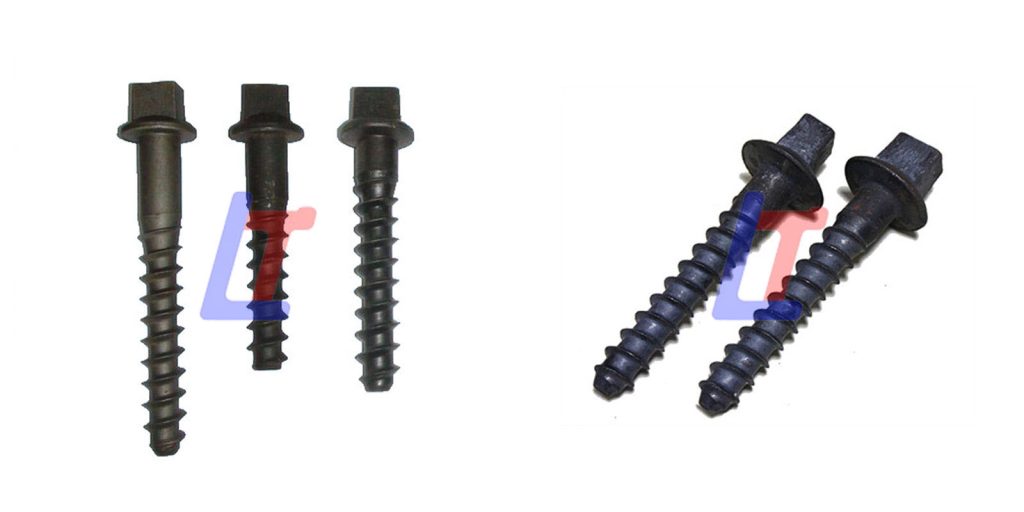
Key Features:
1. High-Strength Threaded Shank
- Made from alloy steel, carbon steel, or stainless steel for corrosion resistance.
- Fully or partially threaded for optimal grip in different sleeper materials.
2. Hexagonal or Square Drive Head
- Compatible with torque wrenches, impact drivers, or manual tools for installation.
3. Anti-Vibration & Anti-Loosening Design
- May include locking threads, nylon inserts, or serrated flanges to prevent loosening under dynamic loads.
4. Corrosion-Resistant Coatings
- Hot-dip galvanized, epoxy-coated, or Dacromet-treated for extended lifespan in harsh environments.
5. Compatibility with Elastic Fastening Systems
- Works with rail clips, baseplates, and insulating pads for a secure and flexible rail connection.
Advantages:
- Higher Load Capacity – Suitable for heavy-haul and high-speed rail lines.
- Reduced Maintenance – Resists loosening better than traditional spikes.
- Versatile Sleeper Compatibility – Works with concrete, steel, and composite sleepers.
- Longer Service Life – Corrosion-resistant variants last decades in harsh conditions.
Common Applications:
- High-Speed Rail (HSR) Tracks – Ensures stability at speeds over 200 km/h.
- Urban Metro & Tram Systems – Reduces vibration noise in city environments.
- Heavy-Freight Corridors – Withstands extreme axle loads (30+ tons).
- Electrified & Ballastless Tracks – Used in modern slab track designs.
Installation Method:
1.Pre-Drilling (if required) – Concrete sleepers may need anchor holes.
2.Torque-Controlled Tightening – Installed using:
- Hydraulic torque wrench (for precision).
- Impact driver (for faster installation).
3.Final Inspection – Verify torque values (typically 250-500 Nm).
Conclusion:
The SS Series sleeper screw spike is the premium choice for modern railway tracks, offering unmatched durability and performance in concrete and steel sleeper applications. Its anti-loosening design makes it ideal for high-speed and heavy-load environments where track stability is critical.
5.TR Thread Screw Spike
The TR Thread Screw Spike (also known as Trapezoidal Thread Screw Spike) is a specialized railway fastener designed for high-load applications, offering superior mechanical strength and vibration resistance compared to standard screw spikes. Its unique trapezoidal thread profile ensures better load distribution and long-term stability in demanding rail environments.
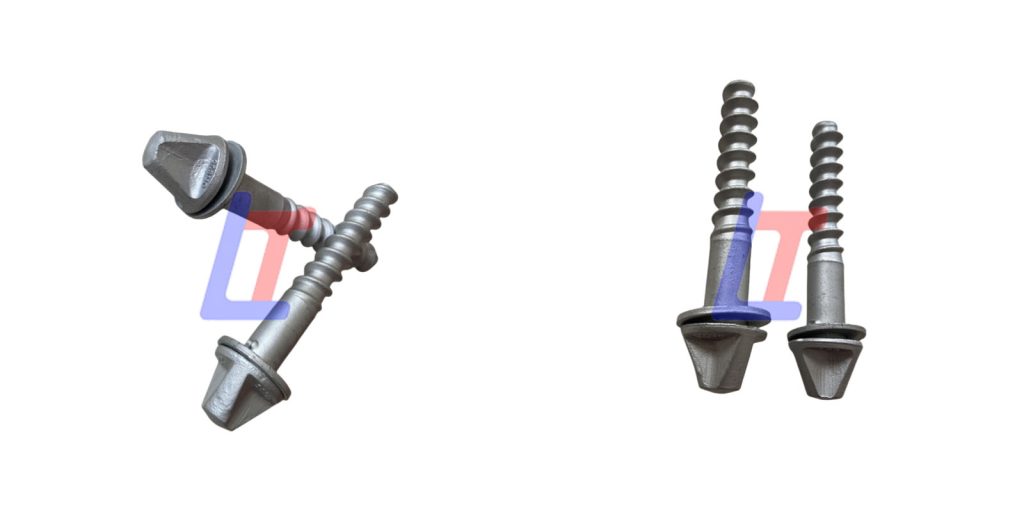
Key Features:
1.Trapezoidal (TR) Thread Profile
- Wider and stronger than standard V-threads, reducing stress concentration.
- Self-locking tendency minimizes loosening under vibration.
2.High-Strength Material
- Made from alloy steel (Grade 8.8/10.9) or stainless steel for durability.
- Optional hot-dip galvanizing, Dacromet, or epoxy coating for corrosion resistance.
3.Hexagonal or Square Drive Head
- Compatible with torque wrenches, impact drivers, or manual tools.
4.Optimized for Concrete & Steel Sleepers
- Used in ballastless tracks, heavy-haul lines, and high-speed rail systems.
Advantages:
- Higher Load Capacity – Trapezoidal threads handle 30%+ more axial force than standard threads.
- Vibration Resistance – Thread geometry resists self-loosening under dynamic loads.
- Longer Fatigue Life – Reduced stress concentration extends service life.
- Easy Maintenance – Can be disassembled and reused if undamaged.
Common Applications:
- High-Speed Rail (HSR) Tracks – Critical for stability at 300+ km/h speeds.
- Heavy-Freight Corridors – Withstands 35+ ton axle loads.
- Urban Transit & Metro Systems – Reduces maintenance frequency in tunnels.
- Bridge & Viaduct Tracks – Resists vibration-induced loosening.
Installation Method:
- Pre-Drilling (Concrete Sleepers) – Requires precise anchor hole (diameter varies by spike size).
- Torque-Controlled Installation – Typically tightened to 400-600 Nm (varies by specification).
- Post-Installation Inspection – Ultrasonic testing may verify thread engagement.
Why Choose TR Thread Screw Spikes:
- Safety Critical Zones benefit from their anti-loosening design.
- Cost-Effective Long-Term – Reduced maintenance offsets higher initial cost.
- Future-Proofing Tracks – Compatible with next-gen 400+ km/h rail systems.

